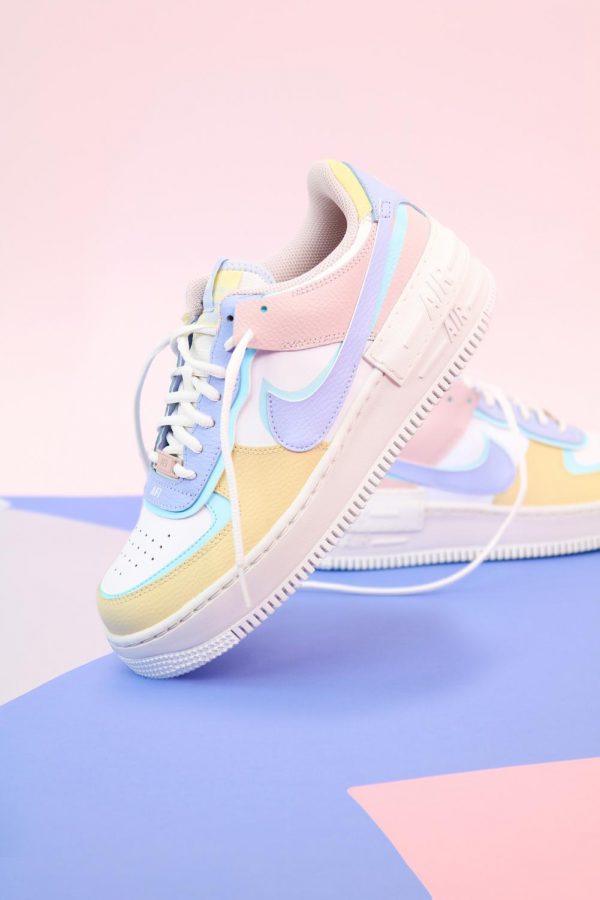Generation Z Participates in Sneaker Reselling
February 1, 2021
You are scrolling online, frantically comparing prices from the thousands of online retailers at your disposal. The goal is to find the shoes you want, in your size at the lowest price humanly possible. An hour passes and you have made no progress in your desperate attempt at finding the best deal, hopelessness quickly setting in.
This desire for reliability and lower prices, as well as the unwillingness to sacrifice quality in retail, has led to the rapid rise of online reselling platforms, specifically in the sneaker industry. The value attached to not just luxury, but limited items that are hard to get is driving consumers, especially youth to participate in the footwear market. According to Cowen Equity Research, an investment analysis company, the secondary sneaker market (sneaker resale market) could potentially reach $30 billion by 2030, and the online marketplaces like GOAT, StockX, and eBay that serve as an intermediary between the buyer and the seller are thriving off of the world’s shift to online retail. “It [COVID-19] created this huge opportunity in a lot of ways, with all of these lockdowns you saw a shift to an almost exclusively online shopping experience,” Senior Economist for StockX Jesse Einhorn said.
In the sneaker world, the seller participates in “drops” or the release of a shoe by a company like Nike. It often takes planning and skills to secure the product so the buyer gets to forgo the uncertainty and effort of a shoe release while the seller dictates the price of the shoe depending on availability and value. The online platforms that they go through simply confirm the validity of the order and certify the shoe. “Shoes are a form of expression, they can make or break an outfit but more importantly when you put them on you are sharing a story,” junior Frances Pope said.
“The people that are fueling this, and the young people specifically that are really growing our market are not just the buyers, but also the sellers. The people that go to Nike or Adidas or Supreme and buy the products on the primary market. Either they stand in line or they sign up for a raffle or they go on a sneakers app and they win the draw, they will often turn around and sell that product on Stock X. For them, it’s really about unlocking economic opportunity… These products are worth more than what people pay for them, people are signing up to purchase a 200 dollar sneaker that is worth 400 dollars on the market,” Einhorn said.
“I wanted to get the best price on my shoes and after doing my research, reselling platforms was the best option. I think they [reselling platforms] are good obviously for the seller but also the buyer because they have a chance to get a pair of shoes after the drop,” sophomore Lauren Anthony said.
Gen Z’s participation on both sides of the industry is rising. Piper Jaffrey, an investment bank, did surveys of Gen Z customers in spring 2020 and found that 31 percent of Gen Z men and 22 percent of Gen Z women would consider themselves sneakerheads. “I have formed a love for shoes because it is a way to express yourself in so many ways. All bright colors and different shapes give you an entry into something truly super fun,” sophomore Peyton Grey said.
“It is a very young and fashion-forward user base, we often talk of our customers as being next-gen customers and consumers of current culture, they are typically quite young, 70 percent of our users are under the age of 35, the majority are Gen Z and Millennial,” Einhorn said.
Then you stumble across a resale platform, the seller has the shoes you want in your size at the lowest price humanly possible. How they procured such a shoe is a mystery to you, maybe they camped out in front of a store or signed up for a raffle to get the pair you so desperately desire, but in the end, there is a victory on both ends of the transaction. You get the shoes, they get the money. No matter what side of the secondary sneaker market you choose to embrace, buyer or seller, know that you are one of the millions of global youth embracing this new method of self-expression and opportunity for economic gain.








